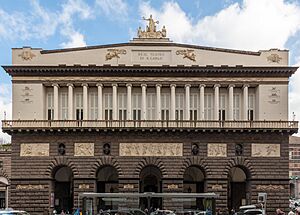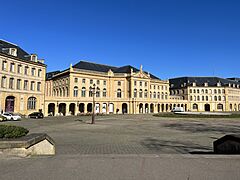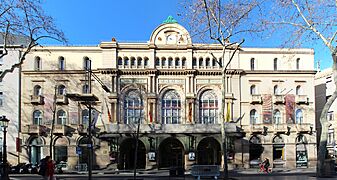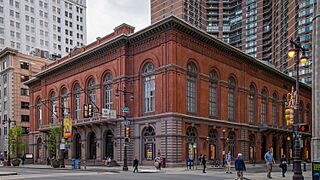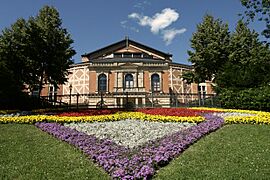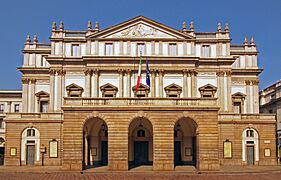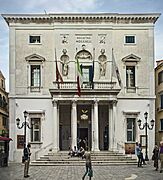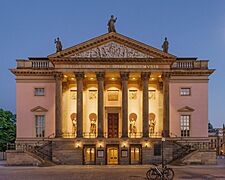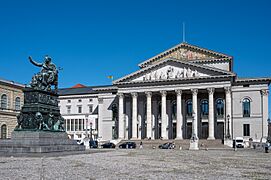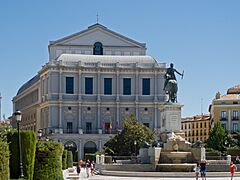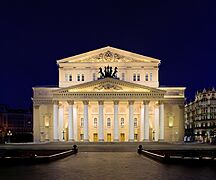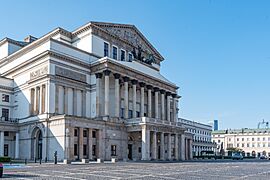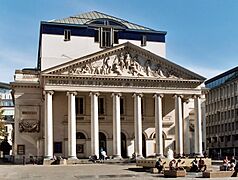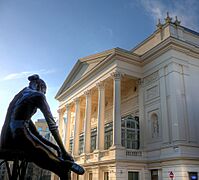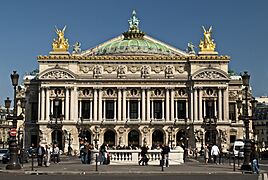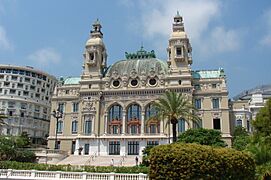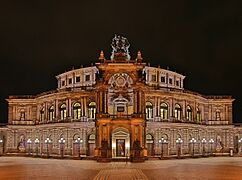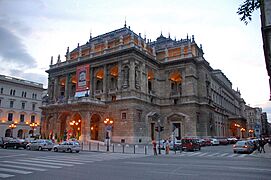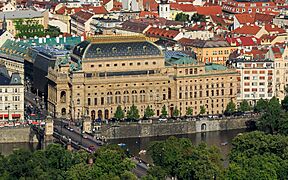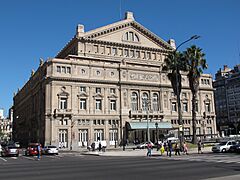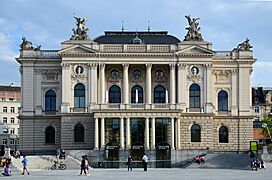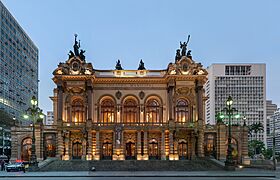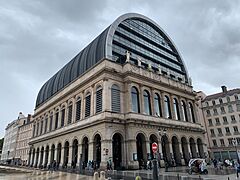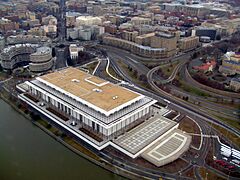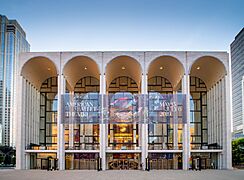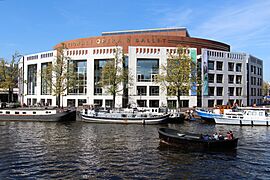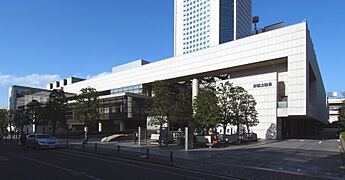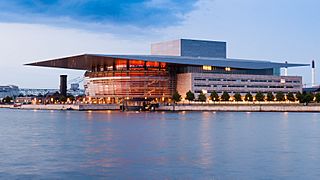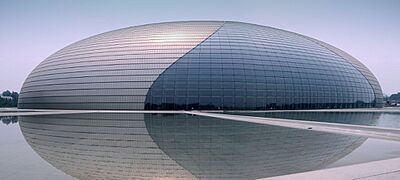Opera house facts for kids

An opera house is a special building where people perform opera. An opera is a play where the story is mostly told through singing, often with an orchestra playing music. Like other theaters, an opera house usually has a stage for performers, a space for the orchestra (called an orchestra pit), seats for the audience, and areas backstage for costumes and sets. It also has offices for the people who run the opera company.
Some buildings are made just for operas. Other opera houses are part of bigger places for performing arts. Sometimes, the name opera house is used to make any large performing arts center sound more important.
Contents
History of Opera Houses
Ancient Theaters
Long ago, in ancient Greece and Rome, people built amazing theaters. A writer named Vitruvius described how these theaters had great sound. They even used bronze pots to make voices sound louder and clearer!
These ancient theaters were perfect for performances. However, they were not used for opera as we know it today. Instead, they were for religious ceremonies and plays that honored their gods. Over time, as the Church grew, these types of shows became less common.
Middle Ages Performances
During the Middle Ages, many old theaters were no longer used. People even took stones from them to build other things. But music was still important, especially in religious services.
Sung plays, like the Jeu de Daniel, became popular. These plays told stories from the Bible. Later, in the 1400s, religious plays called mystery plays were performed in town squares. They also had singing and music. There were also simpler, more popular musical plays, like Jeu de Robin et Marion.
Modern Opera Houses Begin
In the early 1600s, something new happened in Italy. A style of art called Baroque began, and singing in plays changed a lot. This led to the birth of opera!
The very first public opera house was the Teatro San Cassiano in Venice, Italy. It opened in 1637. Italy still has many famous opera houses today, like the Teatro Massimo in Palermo, the Teatro di San Carlo in Naples, and the Teatro alla Scala in Milan.
In the 1600s and 1700s, kings, queens, and rich people often paid for opera houses. They used their support for the arts to show off their power and importance. The first opera house in Germany, the Oper am Gänsemarkt, was built in Hamburg in 1678.
Later, in the 1800s, more people could afford to go to the opera. So, opera houses started to get money from ticket sales and public support, not just from rich patrons.
In the United States, early opera houses were used for many things. They hosted dances, fairs, plays, and even vaudeville shows, not just operas. Today, most opera companies get their money from government support, ticket sales, and private donations.
-
The Estates Theatre in Prague, Czech Republic. Mozart performed here.
-
The Academy of Music in Philadelphia is the oldest opera house in the USA.
-
The Bayreuth Festspielhaus in Bayreuth, Germany. It was built by Richard Wagner just for his operas.
Why "Opera House"?
In the 1800s, many theaters in the United States were called "opera houses." This was true even if they rarely, if ever, showed operas.
Opera was seen as a more respected art form than regular plays. So, calling a local theater an "opera house" made it sound more important. It also helped to get rid of objections from people who thought theater was not good.
Gallery
-
The Teatro alla Scala in Milan, Italy
-
Berlin State Opera in Germany
-
National Theatre in Munich, Germany
-
Teatro Real in Madrid, Spain
-
Bolshoi Theatre in Moscow, Russia
-
Grand Theatre in Warsaw, Poland
-
Royal Theatre of La Monnaie in Brussels, Belgium
-
Royal Opera House in London, UK
-
Palais Garnier in Paris, France
-
Semperoper in Dresden, Germany
-
Hungarian State Opera House in Budapest, Hungary
-
National Theatre in Prague, Czech Republic
-
Teatro Colón in Buenos Aires, Argentina
-
Zürich Opera House in Zürich, Switzerland
-
Theatro Municipal in São Paulo, Brazil
-
Opéra Nouvel in Lyon, France
-
Metropolitan Opera House at Lincoln Center in New York City, USA
-
Stopera in Amsterdam, Netherlands
-
New National Theatre Tokyo in Tokyo, Japan
-
Copenhagen Opera House in Denmark
-
Oslo Opera House in Norway
-
National Centre for the Performing Arts in Beijing, China
See also
 In Spanish: Teatro de ópera para niños
In Spanish: Teatro de ópera para niños
- List of opera houses
- List of opera festivals
- List of concert halls
- List of buildings
- Small-town opera house


